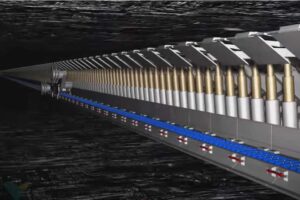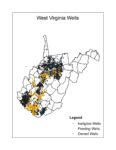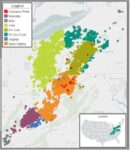For Immediate Release | August 19, 2025
Contact: David McMahon, J.D. (304) 993-0468, wvdavid@wvdavid.net
West Virginia Supreme Court grants WVSORO’s motion to file an amicus brief in a long wall mining surface subsidence damage case.
Appeal will address when the clock starts—if at all—on surface owners’ claims for subsidence damage: Surface owners think there should be no statute of limitations, or if there is, there should be equitable tolling where surface owners do not know when the mining occurs or when the subsidence will be over.
Charleston, W.Va. — The West Virginia Supreme Court has ordered that the West Virginia Surface Owners’ Rights Organization (WVSORO) may file a “friend of the court” amicus brief (below) in the appeal brought by Jason and Crystal Wilhelm of Ohio County. The Wilhelm’s case was dismissed after lower courts held they waited too long to file suit for compensation for surface damage caused by long wall coal mining subsidence.
In decisions below, the Circuit Court and the Intermediate Court of Appeals applied general statutes of limitations to hold that any claim had to be brought within, at most, three years of the mining: a timeline that assumes surface owners know exactly when undermining occurs and ignores that subsidence can occur or worsen for years or decades after mining has ceased. During that time period, the Wilhelms attempted to work out an agreement with the mining company, but the company refused to settle unless the Wilhelms released all claims for future subsidence damages. The lower courts relied on code provisions not specific to mining or subsidence, despite clear and compelling legal and policy reasons that such provisions were inapplicable here.
What’s at stake.
Historically, coal mining involved leaving behind pillars to provide support for the surface. But newer, long wall mining removes coal in broad panels and intentionally allows the mine roof and overlying strata to collapse, often causing the ground above to sink (called “subsidence”). Resulting subsidence damage can crack foundations, damage water and gas lines, drain wells, dry-up springs, and reduce property values.
Very often the surface owners do not own the coal and so they get no royalty benefits from the coal being mined and sold. Courts have held that even when coal severance deeds were written and signed back when everyone only knew about room and pillar mining, so there was only a chance of subsidence, the surface owner has no common law suit for the newer long wall mining with its certainty of subsidence damage.
In order to at least partially remedy the failure of common law remedies to address subsidence damage from long wall mining, Congress enacted the Surface Mining Control and Reclamation Act (SMCRA), and the state legislature enacted the West Virginia Surface Coal Mining and Reclamation Act (WVSCMRA). Both SMCRA and WVSMCRA provide specific remedies for surface owners to be compensated for damages caused by subsidence. West Virginia surface owners rely on these acts to restore their homes and land after long wall mines pass under their property. These are the Acts that the Wilhelm’s relied on in their law suit. Neither of those laws include a statute of limitations giving surface owners only a limited amount of time to file suits.
WVSORO’s position.
“WVSORO thinks that if a federal law or a specific state law gives a right to sue for compensation, and if that law does not have a statute of limitations, then courts shouldn’t graft one on, and we think the federal agency that administers SMCRA agrees with us,” said David McMahon, a co-founder of WVSORO. “These are what are called ‘remedial’ laws that were enacted because of bad case law ignoring the contemplation of the parties at the time of the signing of the severance deeds. So even if a statute of limitations is found to apply, basic fairness requires equitable tolling of that statute of limitations. ‘Equitable tolling’ is a concept from common law precedent that is a kind of suspension of the statute of limitation. Like the rule already in some cases that a statute of limitations starts from when the person seeking damages first knew about the harm,” McMahon continued. “If there is some dug up statute of limitations, we think long wall coal mine surface subsidence harm cries out for equitable tolling of the statute of limitations when the surface owner does not even know when the mining is happening. Even more so when the resulting harm might be non-existent or only slight at first and not worth the hassle of hiring a lawyer and suing a coal company at first, but the harm could get worse and worse. And a firm statute of limitations would encourage the coal company to drag out negotiations, like in this case, hoping the surface owners will wait too long.”
WVSORO’s amicus brief explains why subsidence-specific remedies under SMCRA and WVSCMRA should not be cut off by generic deadlines in other statutes, and why equitable tolling is especially appropriate where the timing and progression of damage are outside a surface owner’s knowledge or control.
Case timeline.
The Wilhelm’s brief was filed in the Supreme Court at the same time that WVSORO filed its motion to file its amicus brief. Tunnel Ridge has until September 18, 2025, to file a response. And the Wilhelm’s reply brief is due by October 8, 2025.
About WVSORO.
Founded in 2007, the West Virginia Surface Owners’ Rights Organization advocates for policies and practices that respect the rights of surface owners affected by oil, gas, and coal development. WVSORO provides resources, education, and support to West Virginians seeking to protect their land, water, and homes.
END###










